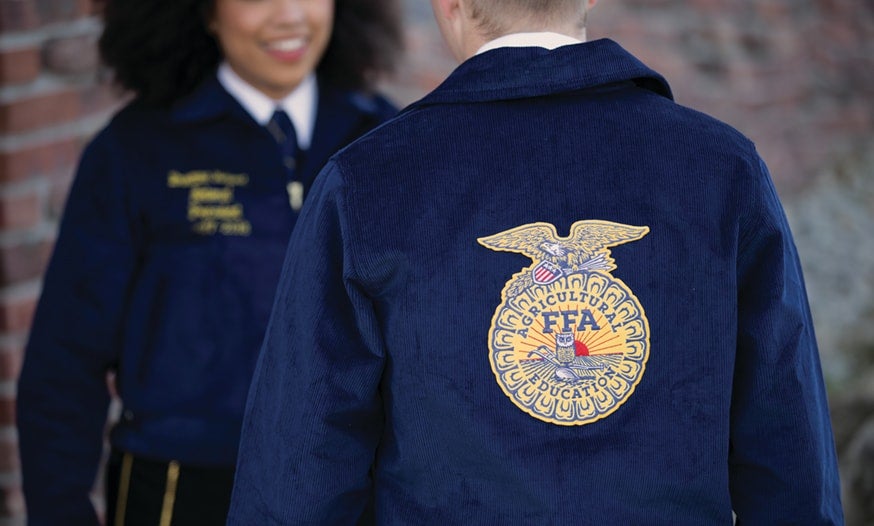The FFA emblem is one of the most iconic images in the agricultural industry and dates back nearly 100 years. However, the creation of this emblem is shrouded in both history and mystery. While the current emblem features five icons representing the history, goals and ambition of the National FFA Organization, other symbols were considered throughout the years and could have changed everything from the patches on FFA jackets to the words spoken during opening ceremonies.
One alternative icon considered was the horn of plenty. According to the ancient Greeks, baby Zeus was cared for and fed by Amalthea when he broke off one of her horns. This horn began to emit a constant supply of food for him. For these reasons, the horn of plenty became the symbol of prosperity, wealth and abundance.
Strong academic programs are a cornerstone to successful FFA chapters. This academic angle was meant to be represented by the lamp of knowledge. The lamp of knowledge is derived from the ancient Egyptian lamp, the same symbol used for the genie lamp in Disney’s Aladdin. With an eternal flame of knowledge, the lamp often symbolizes academic excellence.
Long before the steel plow became popular, many farmers used a spade in their fields. The original FFA emblem was inspired by a young farmers’ organization in Denmark called Landøkonomisk Rejsebureau, which showcased an owl sitting on top of a spade. While there is very little collective symbolism with a spade, it is often associated with hard work.
Once it was decided to move forward with a plow instead of a spade, another major point of contention was whether the plow should be sitting on top of the ground or be in the ground. A plow as an object (sitting on top of the ground) represents the reaping of life. But the significance of plowing (in the ground) represented receiving truth.
One part of the emblem that is often overlooked is the eagle at the top. In early FFA history, the eagle was left off in preference for a simple circular image. Once the trademark of the emblem was secured, the eagle became a permanent feature. However, the debate continued regarding the number of arrows in the eagle’s grasp. An original proposal recommended 13 arrows to represent the original colonies. However, this design led to an infringement issue with the National Seal. There was further confusion depending on who manufactured items with the FFA emblem. If you look through your FFA memorabilia, you can see some emblems with three arrows and others with five arrows.
Like any living organization, the symbolism and iconography used to represent the National FFA Organization is ever-changing. While it has been decades since the emblem was last modified, there may come a day when additional changes are made to continue to represent the vastness and great diversity represented by the world’s largest agricultural youth organization.












